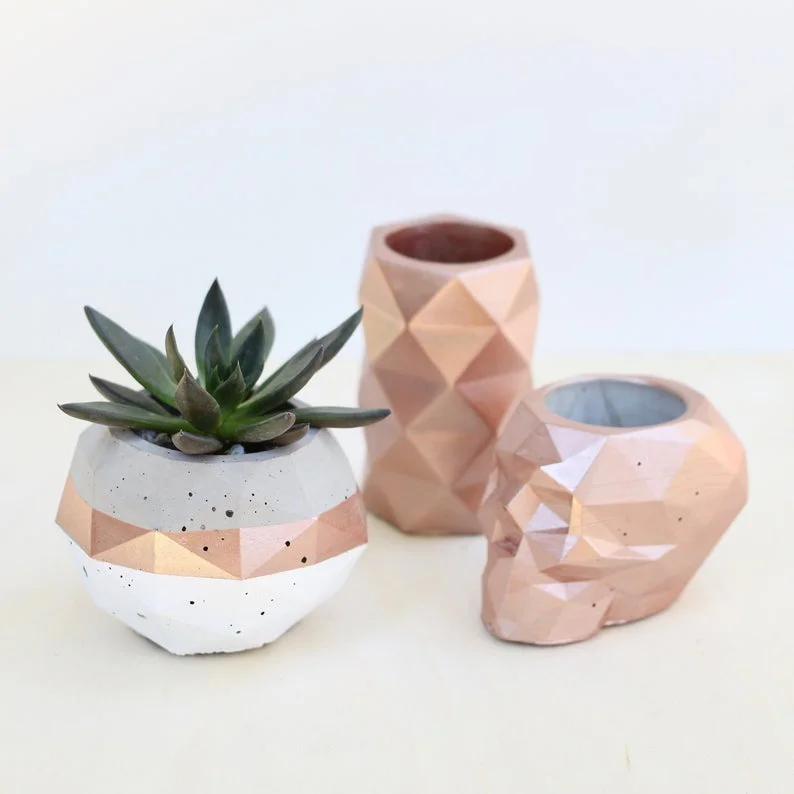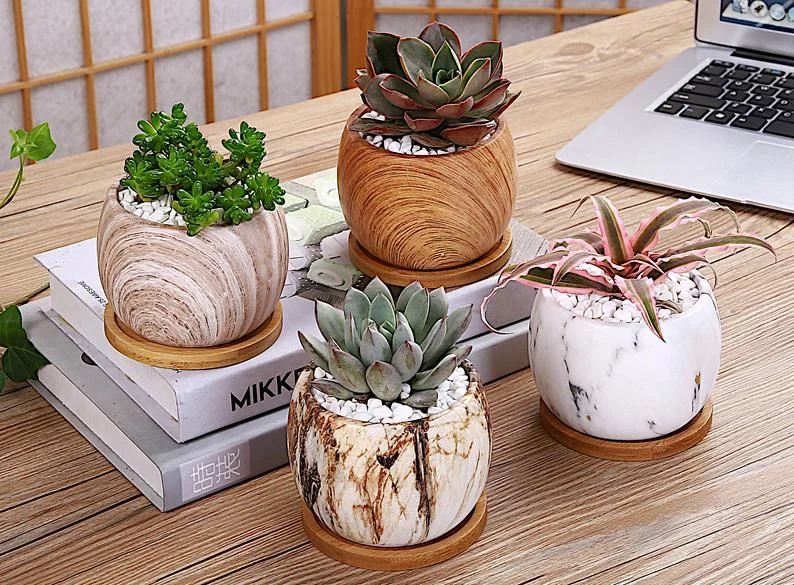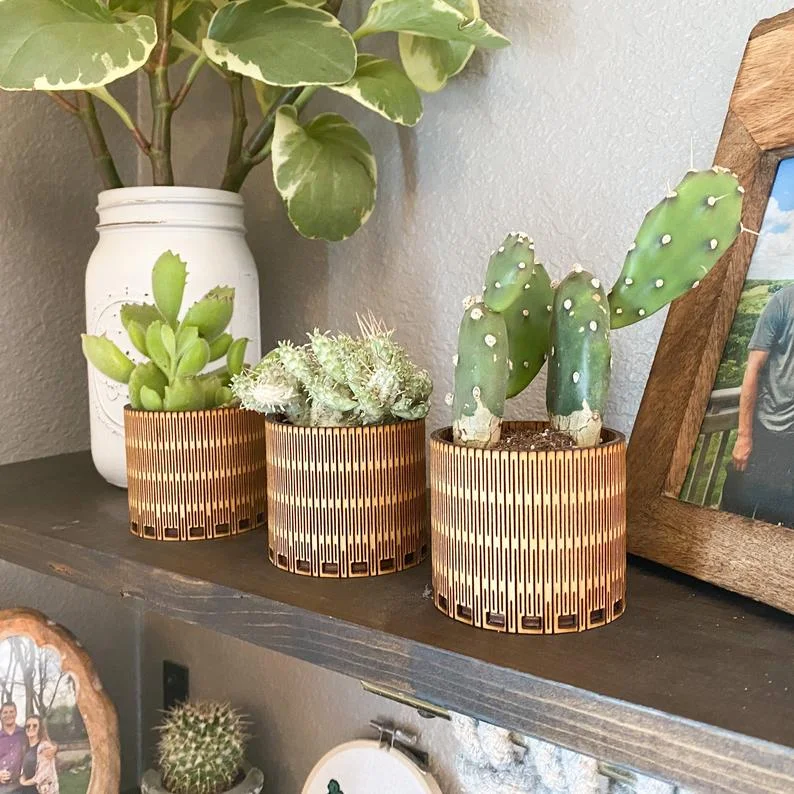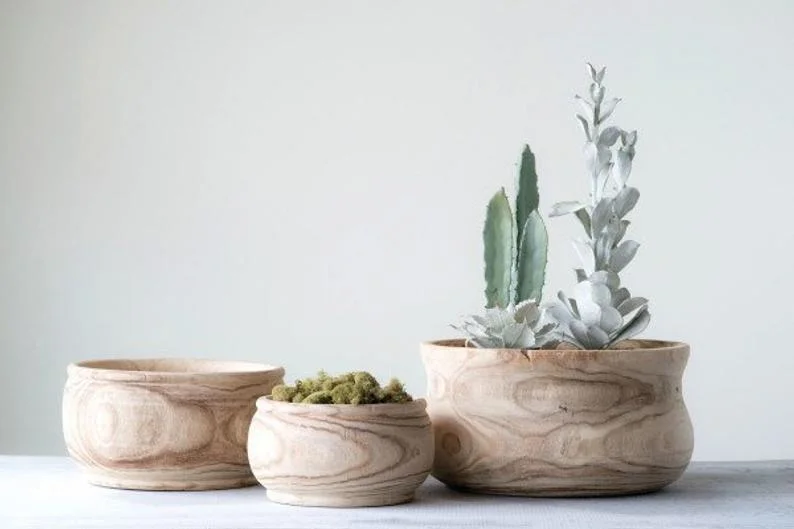Finding the Perfect Drainage Pots for Your Succulents
When it comes to succulents, finding the perfect drainage pot is no small feat. It may seem like just a simple container, but believe me, it plays a vital role in the well-being and overall health of your little green friends. Today, we’re diving into the exciting world of drainage pots for succulents.
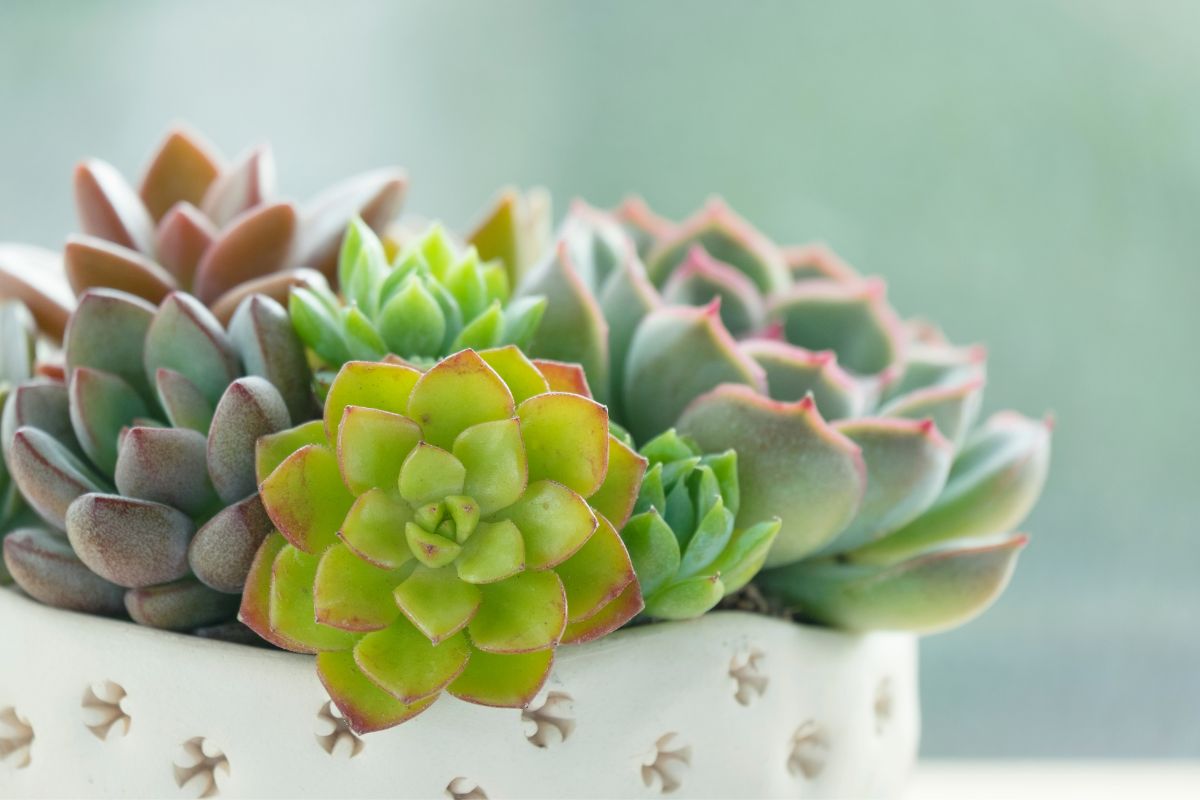
Now, picture this: you walk into a room, and there they are – your succulents, proudly displaying their vibrant colors and unique shapes. They’re not just plants; they’re an essential part of your cozy home atmosphere, bringing a dash of nature and beauty to your everyday life. And that’s why choosing the right flower pot for them is almost as thrilling as adding them to your collection.
Personally, I’m currently obsessed with white pots and those with a sleek concrete look. They give off such a modern and sophisticated vibe, perfectly complementing the green hues of the succulents. But wait, there’s more! Golden pots are a personal favorite of mine too. They add a touch of elegance, creating a stunning contrast against the lush greenery, making your plants feel like the stars of their own show.
Enough chit-chat, though. Let’s uncover the secrets to finding the ideal drainage pots for your succulents. Trust me, it’s going to be a wild and informative ride – one you won’t want to miss! Get ready to elevate your succulent game and create a picturesque oasis right in your own home.
Contents
- 1 The Right Pot: Not an Easy Choice
- 2 The Best Drainage Pots for Succulents
- 3 What’s the Best Material for Succulent Pots?
- 4 What Container Works Best for Your Succulents?
- 5 What Colors and Textures Make Succulents Shine?
- 6 How Big Should Succulent Pots Be?
- 7 Time to Find Your Perfect Pot
- 8 Frequently Asked Questions
The Right Pot: Not an Easy Choice
Choosing the perfect pot for your succulents can be quite a challenge. I mean, don’t we all love buying those special, unique, and oh-so-unusual pots for our little green pals? But finding “the one” can be tricky. After years of trial and error, I’ve discovered a few key factors to consider when picking the perfect pot. And trust me, newbie succulent enthusiasts often overlook these important points.
The Best Drainage Pots for Succulents
If you’ve been following my posts on proper watering and maintenance, you’ve probably heard me stress the importance of a drainage hole in your pot. Sure, your succulents can survive in a pot without one, but let’s be real here – it’s going to make your life so much more complicated. Keeping these beauties healthy becomes a time-consuming task in a non-draining pot.
But don’t fret just yet if you’ve fallen head over heels for a pot sans drainage hole. Here’s the good news – there’s always a way. With a trusty hand drill, you can create a hole in almost any pot and give your succulents the drainage they deserve.
Let me share some of my favorite pots with you. I absolutely adore the sleek and modern concrete pots from EMSAYstudio. Their clean lines and metallic inserts add a touch of sophistication, creating a stunning contrast against the simplicity of the concrete. And then there are the round and unconventional flower pots from AppyHut that never fail to catch my eye. To ensure no soil spills out, I always use a mesh to cover the drainage holes, allowing water to flow freely. In a pinch, an old strainer can do the trick too.
What’s the Best Material for Succulent Pots?
Once you’ve checked the drainage box, the next question is the material of your succulent pot. Typically, nurseries provide succulents in plastic pots, but for aesthetic purposes, most of us prefer to repot them at home. You have a plethora of options, from ceramic and plastic to wood, metal, and glass.
What Container Works Best for Your Succulents?
The choice of material depends on where you plan to place your succulents. Terracotta and ceramic pots are excellent options, as they allow for good airflow and are perfect for indoor succulents. Just be cautious if your succulents bask in scorching sunlight on the terrace, as these pots can heat up quickly, leading to faster soil drying.
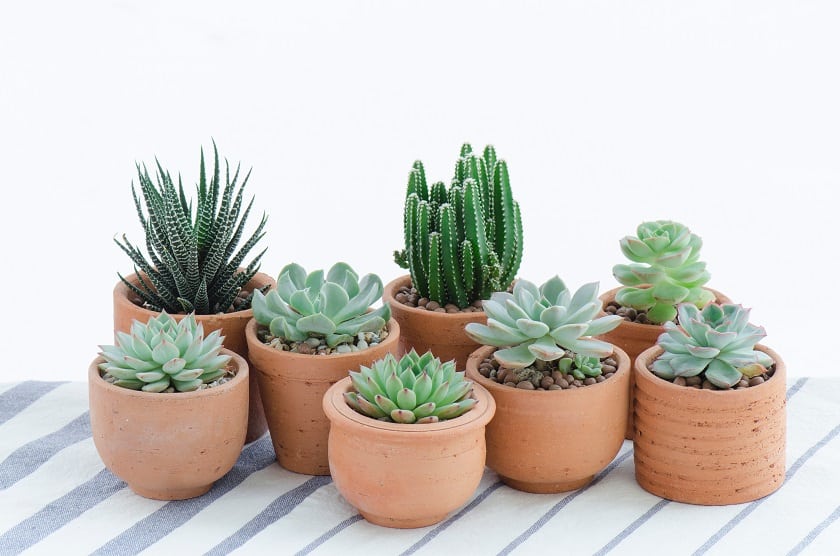
Now, let’s talk plastic pots. They are lightweight, inexpensive, and available everywhere. However, remember that plastic is not breathable, so ensure your pot has a drainage hole and use well-draining cactus soil.
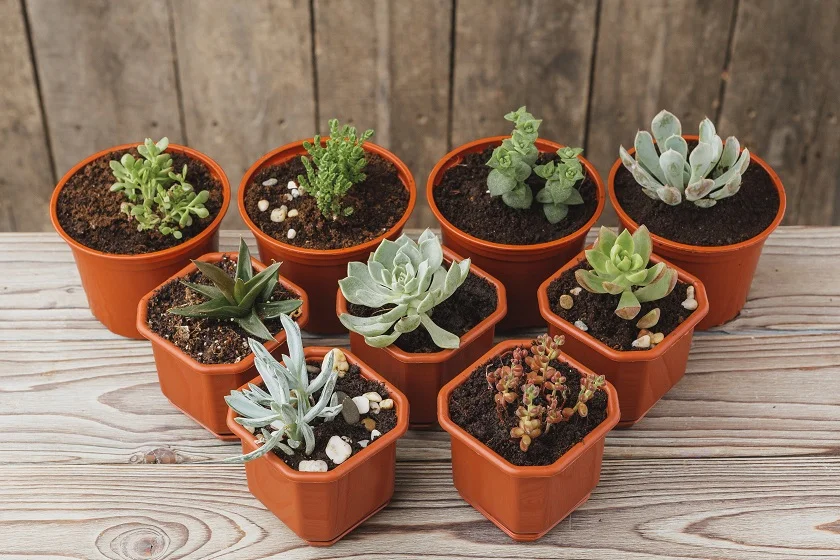
If you’re looking to add some uniqueness to your succulent display, wooden planters or branches can bring that special touch. Make sure to protect wooden planters from rain, as excess moisture can lead to rot.
Metal pots? Well, they may look enticing, but be cautious. Metal pots can heat up rapidly in the sun, potentially damaging the roots. And they’re not immune to rust, which is a big no-no for succulents.
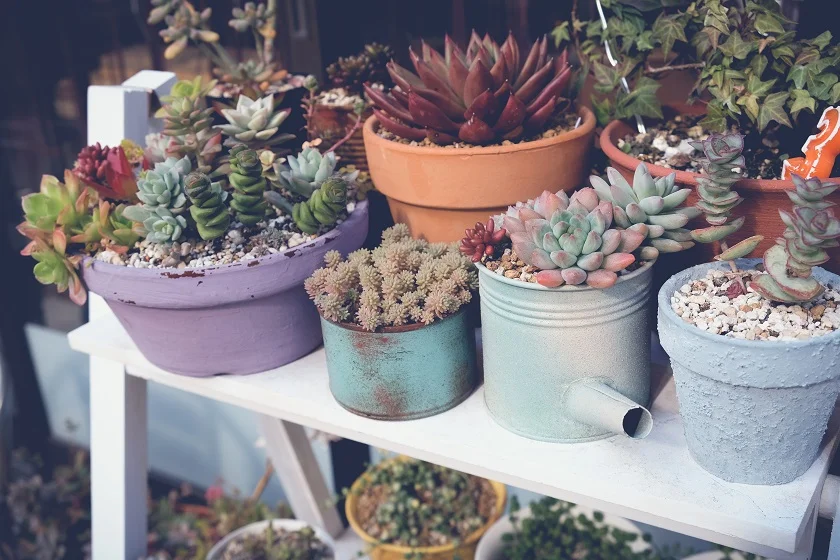
As for glass planters, they’re undeniably beautiful but often lack drainage holes. Be aware that glass pots don’t provide the necessary breathability, and you may need to monitor the soil moisture levels closely.
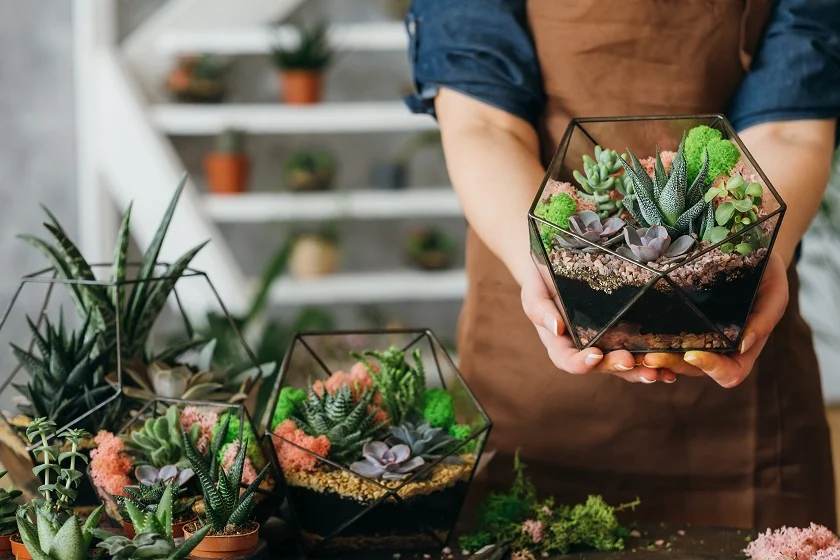
What Colors and Textures Make Succulents Shine?
Once you’ve settled on the material, it’s time to think about colors and styles. Two approaches work best here:
- Choose a pot that complements your succulent plant’s color and style.
- Choose a succulent plant that perfectly matches the color and style of your pot.
When it comes to pot arrangements, sticking to single-colored pots is generally foolproof. But if you’re feeling adventurous with colorful and eye-catching pots, make sure your arrangement either incorporates matching colors or sticks to simple, single-colored succulents. Randomly throwing everything together can create a chaotic and inconsistent display. And if you group several pots together, ensure they maintain a consistent style and color scheme.
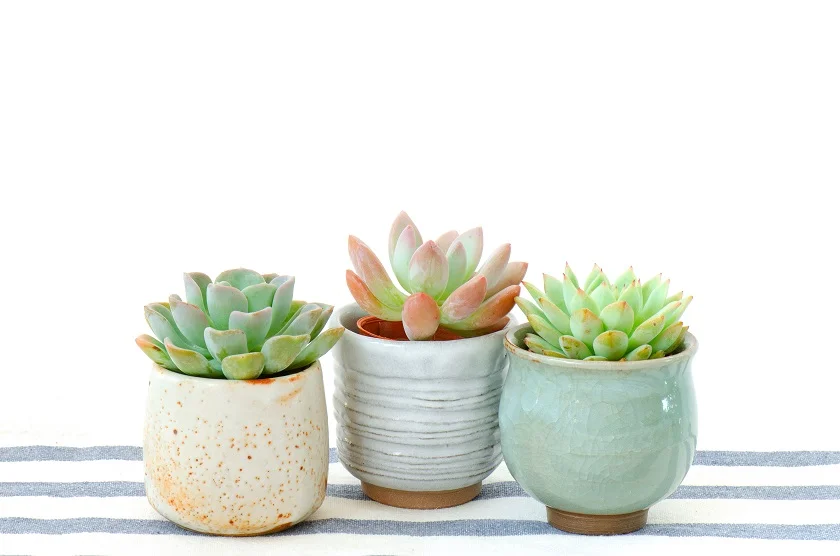
How Big Should Succulent Pots Be?
One common misconception is that succulents thrive in pots much larger than themselves. But that’s not true! Most succulents don’t have extensive root systems and can suffer from rot if placed in a deep container. On the flip side, an overly large pot can hinder growth. So, it’s best to choose a pot that leaves about half an inch of extra room for your succulent to grow comfortably.
If you’re arranging multiple succulents in one pot, give your plants a few centimeters of space to spread and grow. You can plant them close together for an eye-catching display, but remember to water them adequately to avoid any drying out.
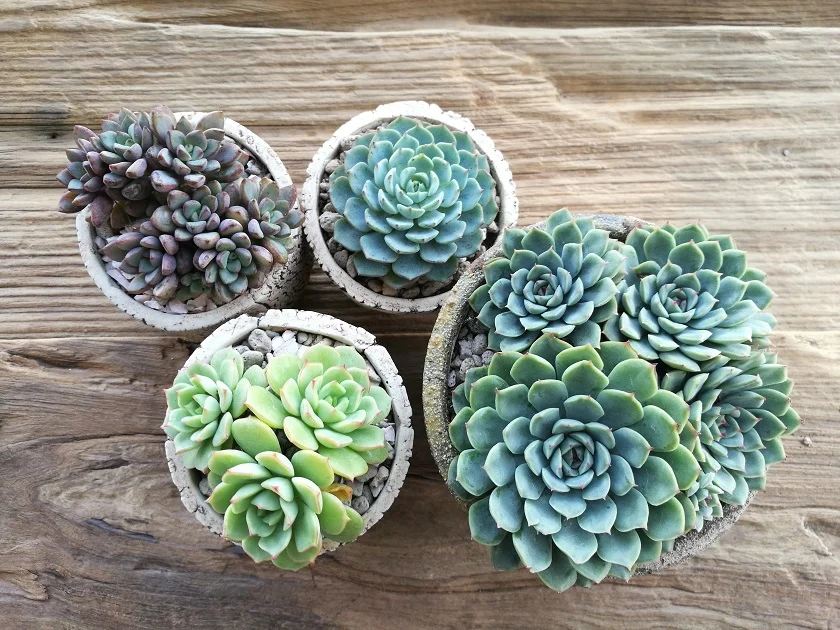
Time to Find Your Perfect Pot
Now that you’re armed with knowledge about the best drainage pots for succulents, it’s time to find your match. Remember:
- Look for a pot with proper drainage.
- Choose a material that suits your succulent’s environment.
- Consider size – not too big, not too small.
- Let color and style work their magic.
- Create harmonious arrangements with complementary pot-and-plant combinations.
Oh, and if you’re ever feeling overwhelmed by all the choices out there, a simple gray or white flower pot or classic terracotta pot will always make any succulent shine. Keep it simple, and let the plant take the spotlight.
I’m here to help you every step of the way, so feel free to check out my recommendations above if you need some inspiration. Happy pot hunting and succulent planting!
Frequently Asked Questions
Do succulents need drainage holes?
Ah, the eternal debate – to drain or not to drain? Let’s set the record straight. Succulents don’t necessarily need drainage holes in their pots to survive. The real secret lies in how we take care of them and water them.
Many folks believe that succulents die purely because of pots without drainage holes. But here’s the truth: it’s less about the pot and more about how much water we give them and the level of humidity. Succulents despise excess moisture, so it’s crucial to have pots made of porous materials, like our ceramic ones.
You can absolutely keep your succulents in pots without drainage holes. The key is to be mindful of how much water you use, ensuring it doesn’t sit around, suffocating your precious plants. And don’t forget to use well-draining substrate – it’s a game-changer.
While not essential, succulent pots with drainage can significantly contribute to your plants’ health and well-being. They allow excess water to escape, reducing the risk of root rot and ensuring your succulents thrive.
So, the choice is yours! But remember, proper care and attention are what truly keep your succulents happy and thriving.

